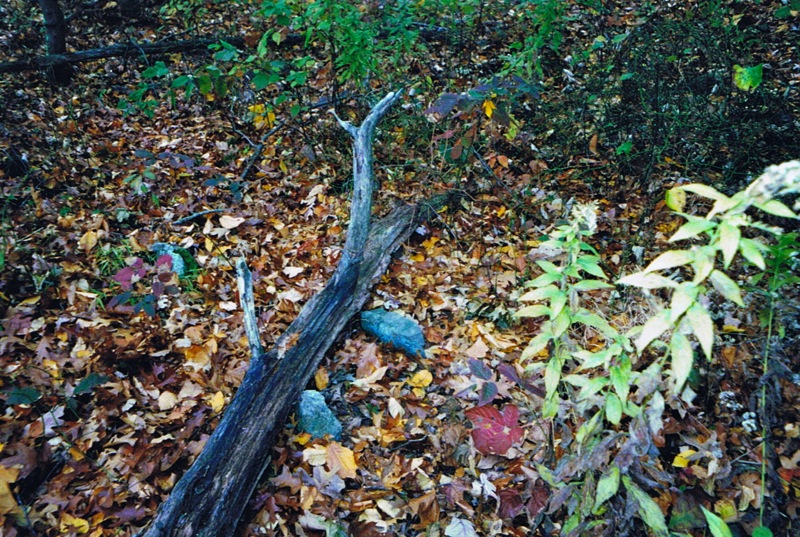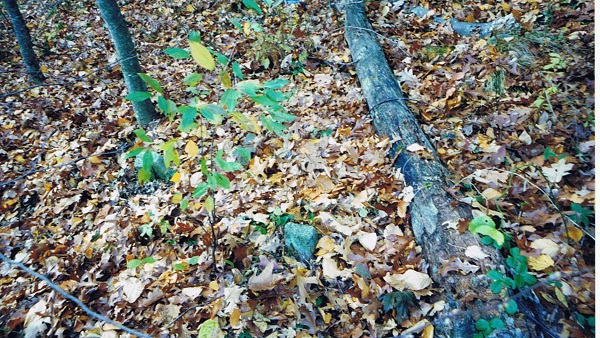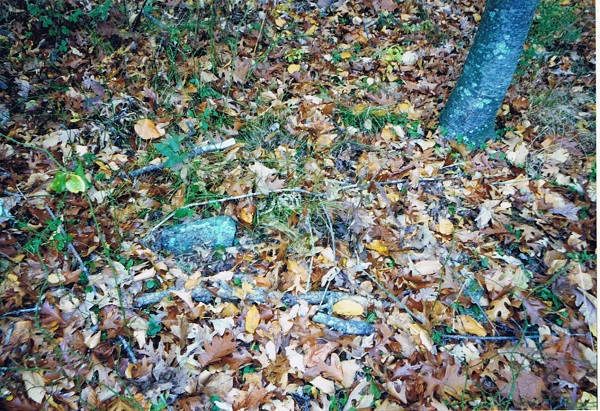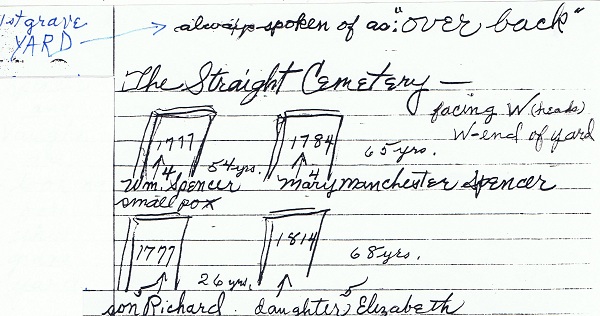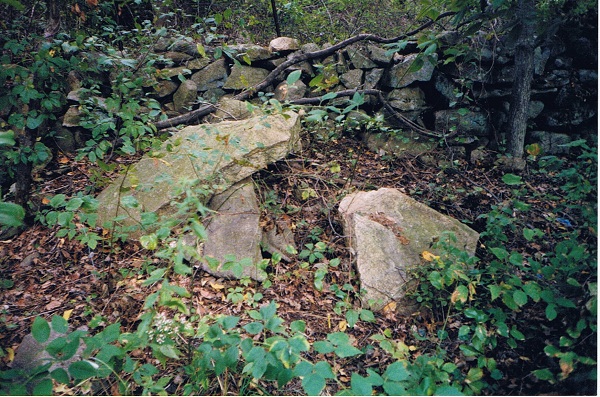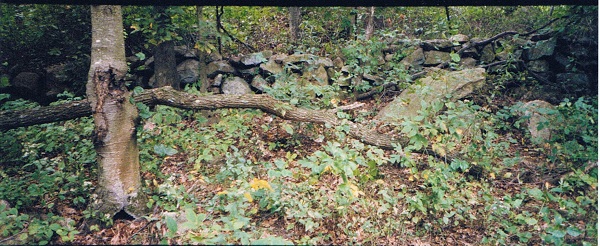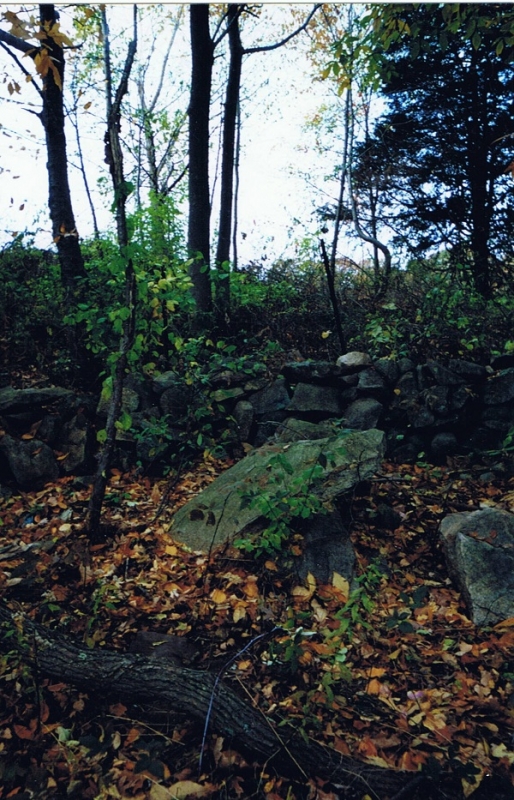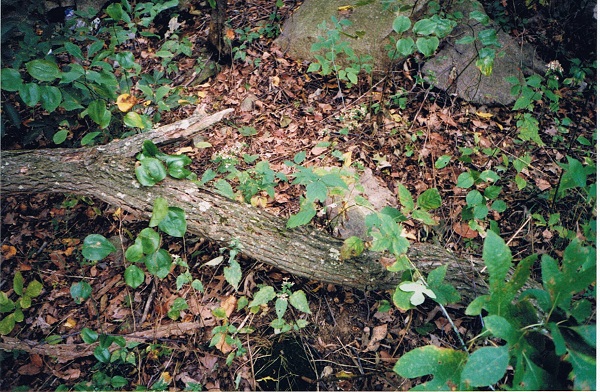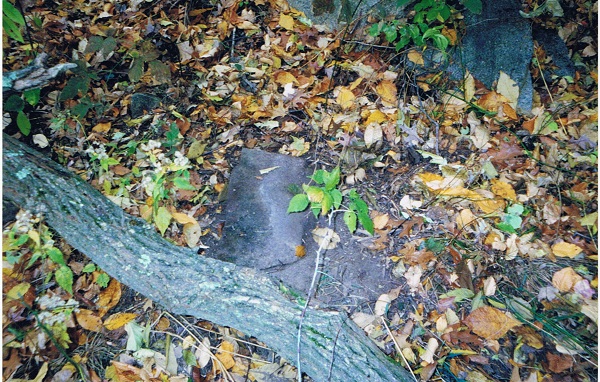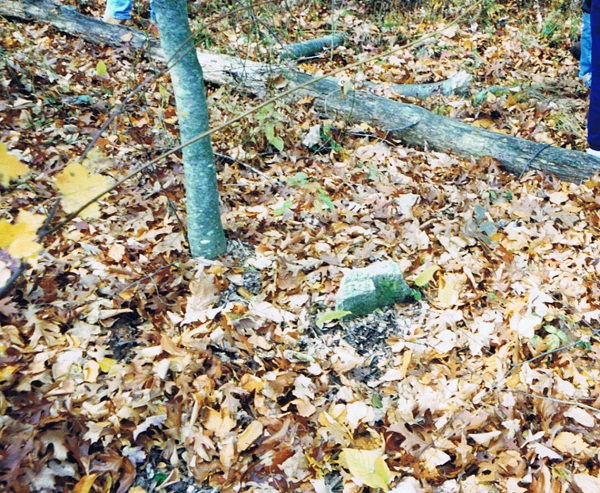
2001: smaller fieldstone(s)
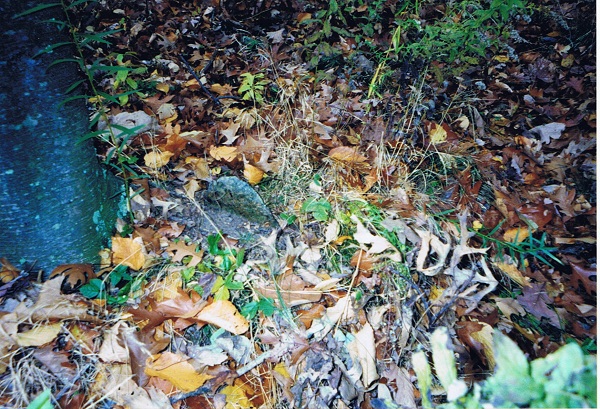
2001: small circular fieldstone with half the circle buried in the ground signifying a child’s burial
There were no monuments or gravestones; instead stones from the fields would be used and called fieldstones. The person’s name and date of death was often etched into the fieldstone. For the father or patriarch, the largest, preferably rectangular, fieldstone was used. The mother, or matriarch, would be buried next to the father and her fieldstone was somewhat smaller than the patriarch’s stone. A flat circular small stone with half the circle buried in the ground would be used to signify a child’s or a slave’s burial. The age of the child determined the size of the fieldstone used. Also, a smaller stone called the footstone was placed at the foot of each grave. Therefore, the placement of the burial was clearly visible with a headstone and a footstone.
The first generation (mother and father) would be placed in the first row (the western most part of the cemetery), and the second generation (their children) would be placed in the next row (to the east of the first row). The third generation would be in the next row, and so on.

